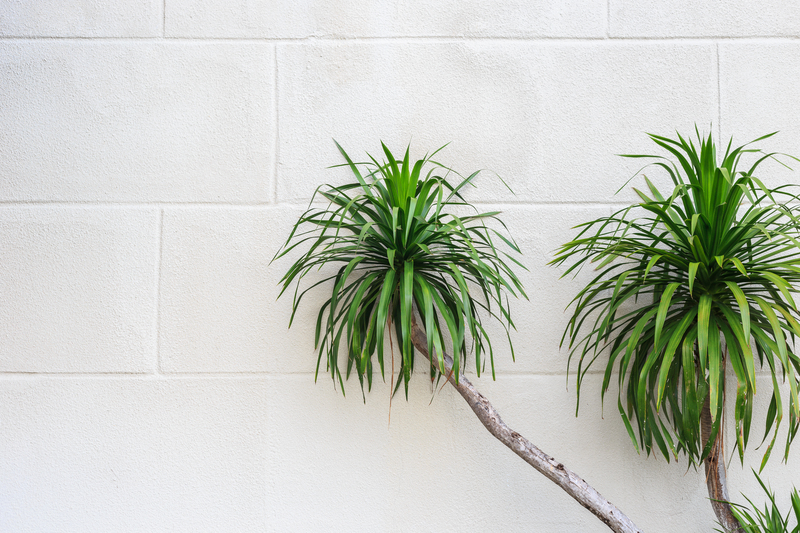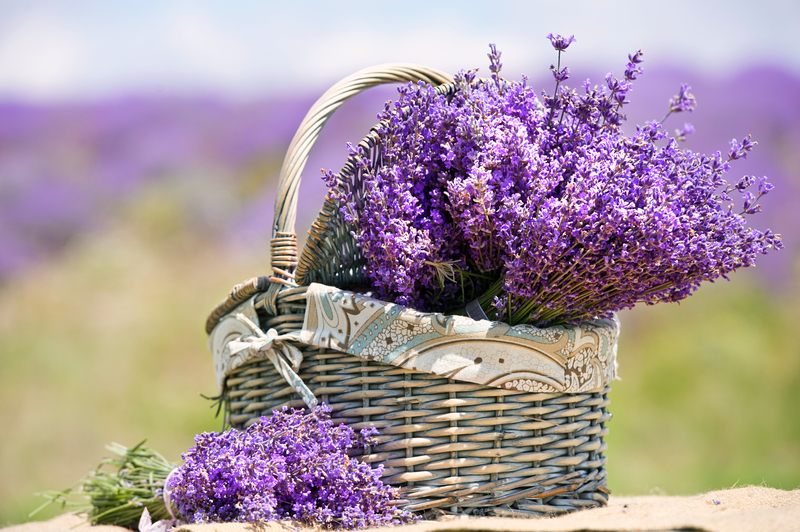Maintaining Vibrant Orchids All Year
Posted on 23/05/2025
Maintaining Vibrant Orchids All Year: The Ultimate Guide
Orchids are renowned for their vivid colors and exquisite blooms, enchanting both novice and seasoned gardeners alike. However, keeping these enchanting plants radiant and healthy throughout all four seasons can pose a unique challenge. In this comprehensive guide, we'll explore practical and effective strategies for maintaining vibrant orchids all year. Learn how to nurture your orchids for continual health and breathtaking beauty, regardless of the season.

Understanding Orchids: What Makes Them Unique?
Before diving into year-round care, it's essential to understand what makes orchids distinct from other houseplants:
- Diverse Species: With over 25,000 species, orchids boast stunning variety in color, shape, and care requirements.
- Epiphytic Nature: Many orchids grow on trees in the wild, drawing nutrients from air and moisture rather than soil.
- Sensitive Roots: Orchid roots are susceptible to rot and need specialized substrates and careful watering.
- Bloom Cycles: Orchids have unique blooming periods--understanding these is crucial for keeping orchids vibrant year-round.
Key Orchid Varieties
- Phalaenopsis: Also known as 'moth orchids,' these are the most popular and easiest to maintain indoors.
- Cattleya: Famous for their large, fragrant flowers and wide range of colors.
- Dendrobium: Hardy plants well-suited for home environments if given the right care.
- Oncidium: Known for their prolific blooms and dancing-flower shapes.
Factors for Keeping Orchids Vibrant Year-Round
Providing consistent, optimal conditions is key to orchid maintenance all year. Pay close attention to the following:
1. Light: The Foundation of Healthy Orchids
- Indirect Sunlight: Orchids thrive in bright but indirect light. Direct rays can scorch their leaves.
- Place orchids near an east-facing window or filtered southern light for best results.
- In winter, consider supplementing with artificial grow lights to compensate for shorter, darker days.
- Tip: A healthy orchid leaf should be light green; dark green leaves indicate insufficient light.
2. Watering Techniques for Year-Round Orchid Care
- Let roots dry out: Overwatering is one of the most common mistakes. Allow the substrate to dry slightly before watering again.
- Water less frequently in winter when the plant's growth slows down.
- Use tepid, distilled, or rainwater to avoid mineral buildup.
- Tip: Water early in the day, allowing leaves and roots to dry before nightfall, preventing rot and disease.
3. Humidity Matters: Sustaining Orchid Vibrancy
- Maintain humidity: Orchids love humid environments. Aim for 40-70% relative humidity.
- Use humidity trays, room humidifiers, or group orchids together to increase ambient moisture.
- Regular misting can help, but avoid leaving water on leaves overnight.
- Pro Tip: Place pots on pebbled trays filled with water to boost moisture without soaking the roots.
4. Temperature: Supporting Strong Growth
- Ideal temperature: 65-80?F (18-27?C) during the day and 60-70?F (16-21?C) at night suits most orchids.
- Protect from drafts, rapid temperature changes, and cold windowsills in winter.
- Ensure nighttime temperatures drop for 2-4 weeks in fall to encourage blooming in many species.
5. Feeding and Fertilizing Orchids Year-Round
- Regular, gentle feeding: Orchids flourish with "weakly, weekly" feeding using a balanced, water-soluble fertilizer.
- Reduce fertilizing frequency in winter when growth slows, and never fertilize a dry plant.
- Flush pots with plain water once a month to prevent salt build-up from fertilizers.
Repotting Techniques: A Vital Step in Orchid Maintenance
Repotting not only provides space for new roots but also prevents disease and encourages growth, helping in maintaining healthy orchids year-round.
When to Repot Orchids
- Every 1-3 years, or whenever the potting medium breaks down.
- If roots outgrow the pot or appear mushy and brown, it's time to repot.
How to Repot Orchids
- Choose a pot slightly larger than the root mass, with excellent drainage.
- Trim any dead or rotting roots with sterilized scissors.
- Use a fresh, orchid-specific mix such as bark, sphagnum moss, or coconut husk.
- After repotting, hold back on fertilizing for two to three weeks to help stressed roots recover.
Pest and Disease Prevention
Vigilance is critical for ensuring radiant orchids all year long. Regularly inspect your plants for signs of pests or disease:
- Common pests: Mealybugs, spider mites, scale, and aphids are attracted to orchids.
- Disease: Root rot, bacterial and fungal leaf spots can develop from excess moisture or poor air circulation.
- Isolate infested plants, remove visible pests, and treat with appropriate organic or chemical agents.
- Maintain good hygiene by cleaning leaves and sterilizing tools between uses.
Seasonal Orchid Care Tips
Spring Orchid Maintenance
- Increase watering and feeding as growth resumes.
- Repot if necessary.
- Move plants to locations with more light if needed.
Summer Tips for Vibrant Orchids
- Monitor for heat stress; shade and increase humidity as required.
- Watch for pests, which are more active in warm weather.
- Water more frequently but ensure the medium drains well.
Orchid Care in Fall
- Gradually reduce watering and fertilizer as growth slows.
- Lower night temperatures to stimulate blooming in winter-blooming orchids.
- Clean and inspect plants before moving indoors if grown outside.
Winter Strategies for Keeping Orchids Healthy
- Increase humidity to counteract dry indoor air.
- Avoid cold drafts and reduce watering.
- Supplement light as needed--move closer to windows or install grow lights.
Encouraging Blooming: The Secret to Year-Round Orchid Color
To maintain vibrant orchids all year, it's essential to encourage and prolong blooming:
- After flowers fade, cut the spike just above the node when it turns brown to stimulate reblooming (especially in Phalaenopsis).
- Provide a period of cooler nights to trigger new spikes.
- Ensure the plant is not stressed by pests, overwatering, or inadequate light.
- Regular feeding during active growth supports healthy blooms.
Frequently Asked Questions About Orchid Care
Why do my orchid leaves turn yellow?
Yellowing leaves can result from overwatering, insufficient light, or natural leaf aging. Adjust your care routine accordingly.
How often should I water my orchid?
Typically, water once a week, but frequency varies with species, climate, and season. Always check the potting medium's moisture before watering.
When will my orchid bloom again?
Most indoor orchids flower once a year, but with proper care and environmental cues, some (like Phalaenopsis) can bloom multiple times annually.

Advanced Tips for Year-Round Orchid Radiance
- Rotate orchids regularly for balanced light exposure.
- Create a dedicated orchid space with controlled humidity and temperature.
- Learn your orchid species' individual bloom and dormancy cycles.
- Use oscillating fans to maintain airflow and reduce disease risk.
Conclusion: Enjoy Vibrant Orchids All Year Long
Maintaining vibrant orchids all year is a rewarding endeavor that enhances any home or garden. With dedicated care--tailoring light, water, humidity, temperature, and feeding--you can enjoy lush foliage and dazzling blooms in every season. By following the comprehensive care practices outlined above, even beginner gardeners can experience the dazzling display of healthy orchids every month of the year. Remember, patience and a little observation go a long way on your journey to thriving, vibrant orchids year-round! Happy growing!

